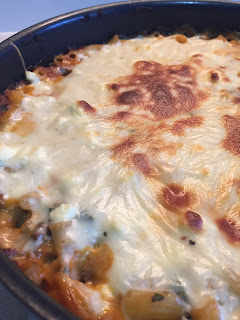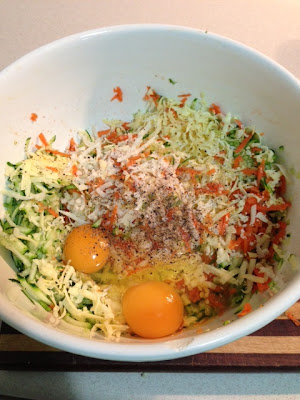Braised Beef Cheeks
Beef Cheeks are the cut of meat that comes from the cows face. It's a cut that gets a lot of work meaning that it's full of sinew and connective tissue, thus being perfect for braising. All the connective tissue means that when cooked properly, the fat gets broken down making the beef cheeks slightly gelatinous, basically meaning they melt in your mouth.
Generally these cuts are less favourable because people are in the mindset that fat equals bad. But in reality fat equals flavour, and if you cook these cuts 'low and slow' then that flavour permeates the meat and you end up with incredible depth of flavour and a gorgeous soft texture.
In utilising less common cuts of meat, you are likely to save money because they are generally cheaper (beef cheeks range from $10-$15 per kilo, compared to $25-$30 per kilo for a cut like eye fillet), and as I said before, they're are more flavoursome. The best thing about this method is you can get it all ready, pop it in the oven and walk away for several hours while the heat does its job at rendering down and softening up those cheeks*
You will need... (3 serves)
6 beef cheeks
2 medium-sized carrots
2 large sticks of celery
1 large brown onion
3 garlic cloves
4 tbs tomato paste
2 cups red wine
4 tins of chopped Italian tomatoes
2 cups chicken stock
2 bayleaves
2 tsp dried or fresh oregano
1 sprig fresh basil or 2 tsp dried
flour
olive oil
salt and pepper
Method...
1. Trim off the layer of fat on the beef cheeks, taking care to not remove too much of the meat. If you don't feel confident doing this, you can ask your butcher to do it for you... I've posted a couple of meat trimming videos below to give you an idea of the best way to trim off the excess fat.
2. Preheat oven to 150°C (300°F). Peel and dice the carrot and onion into chunks, wash and dice the celery, peel the garlic.
3. Place all the vege into a food processor, blitz on high, scrape down the sides and add 2 Tbs of olive oil and process until finely diced.
4. Add 1 cup of flour with some salt and pepper to a tray or plate, lightly coat the beef cheeks.
5. Heat a non-stick frying pan with 2 tbs of olive oil, shallow fry the beef cheeks on a high heat to seal. Allow them to come to a golden brown colour before transferring to a deep roasting dish that will fit about 4-5Lt of liquid.
6. Wipe the excess oil and flour out of the frying pan using some absorbent paper towel (be careful not to burn yourself), then return to the heat and add the vege mixture, fry over a high heat until you can see that the excess liquid has evaporated and the veges are starting to brown.
7. Add the tomato paste, stir to combine, then add the wine and cook on high to evaporate the alcohol slightly. Pour in the tinned tomatoes, chicken stock, herbs and seasoning, then bring to the boil.
8. Transfer liquid to your roasting pan with the beef cheeks. Cover tightly with foil, or a lid if your pot has one, and place in the middle of the preheated oven.
9. Cook for 4 hours, removing half way and turning before carefully resealing and placing back in the oven. Cheeks are ready when they are soft, gelatinous and falling apart.
10. Carefully remove them from the liquid and place the cooking liquid in a pot on the stove to thicken to a thick gravy consistency if necessary. Serve beef cheeks as desired, with either soft polenta, gnocchi pappardelle or rice. Garnish with chopped fresh herbs.
https://www.youtube.com/watch?v=zUopscyu4U8
https://www.youtube.com/watch?v=1ru7uygZD5o
*Keep in mind, as a result of the slow cooking process and the fat content that, when ready, the cheeks can shrink down to almost half their original size. As a rule of thumb I would recommend serving one and a half cheeks per person for a decent-sized portion.
Generally these cuts are less favourable because people are in the mindset that fat equals bad. But in reality fat equals flavour, and if you cook these cuts 'low and slow' then that flavour permeates the meat and you end up with incredible depth of flavour and a gorgeous soft texture.
In utilising less common cuts of meat, you are likely to save money because they are generally cheaper (beef cheeks range from $10-$15 per kilo, compared to $25-$30 per kilo for a cut like eye fillet), and as I said before, they're are more flavoursome. The best thing about this method is you can get it all ready, pop it in the oven and walk away for several hours while the heat does its job at rendering down and softening up those cheeks*
You will need... (3 serves)
6 beef cheeks
2 medium-sized carrots
2 large sticks of celery
1 large brown onion
3 garlic cloves
4 tbs tomato paste
2 cups red wine
4 tins of chopped Italian tomatoes
2 cups chicken stock
2 bayleaves
2 tsp dried or fresh oregano
1 sprig fresh basil or 2 tsp dried
flour
olive oil
salt and pepper
Method...
1. Trim off the layer of fat on the beef cheeks, taking care to not remove too much of the meat. If you don't feel confident doing this, you can ask your butcher to do it for you... I've posted a couple of meat trimming videos below to give you an idea of the best way to trim off the excess fat.
2. Preheat oven to 150°C (300°F). Peel and dice the carrot and onion into chunks, wash and dice the celery, peel the garlic.
3. Place all the vege into a food processor, blitz on high, scrape down the sides and add 2 Tbs of olive oil and process until finely diced.
4. Add 1 cup of flour with some salt and pepper to a tray or plate, lightly coat the beef cheeks.
5. Heat a non-stick frying pan with 2 tbs of olive oil, shallow fry the beef cheeks on a high heat to seal. Allow them to come to a golden brown colour before transferring to a deep roasting dish that will fit about 4-5Lt of liquid.
6. Wipe the excess oil and flour out of the frying pan using some absorbent paper towel (be careful not to burn yourself), then return to the heat and add the vege mixture, fry over a high heat until you can see that the excess liquid has evaporated and the veges are starting to brown.
7. Add the tomato paste, stir to combine, then add the wine and cook on high to evaporate the alcohol slightly. Pour in the tinned tomatoes, chicken stock, herbs and seasoning, then bring to the boil.
8. Transfer liquid to your roasting pan with the beef cheeks. Cover tightly with foil, or a lid if your pot has one, and place in the middle of the preheated oven.
9. Cook for 4 hours, removing half way and turning before carefully resealing and placing back in the oven. Cheeks are ready when they are soft, gelatinous and falling apart.
10. Carefully remove them from the liquid and place the cooking liquid in a pot on the stove to thicken to a thick gravy consistency if necessary. Serve beef cheeks as desired, with either soft polenta, gnocchi pappardelle or rice. Garnish with chopped fresh herbs.
 |
| I shredded the cheeks through the sauce and served with home made gnocchi and lots of parmesan |
https://www.youtube.com/watch?v=zUopscyu4U8
https://www.youtube.com/watch?v=1ru7uygZD5o
*Keep in mind, as a result of the slow cooking process and the fat content that, when ready, the cheeks can shrink down to almost half their original size. As a rule of thumb I would recommend serving one and a half cheeks per person for a decent-sized portion.








Comments
Post a Comment